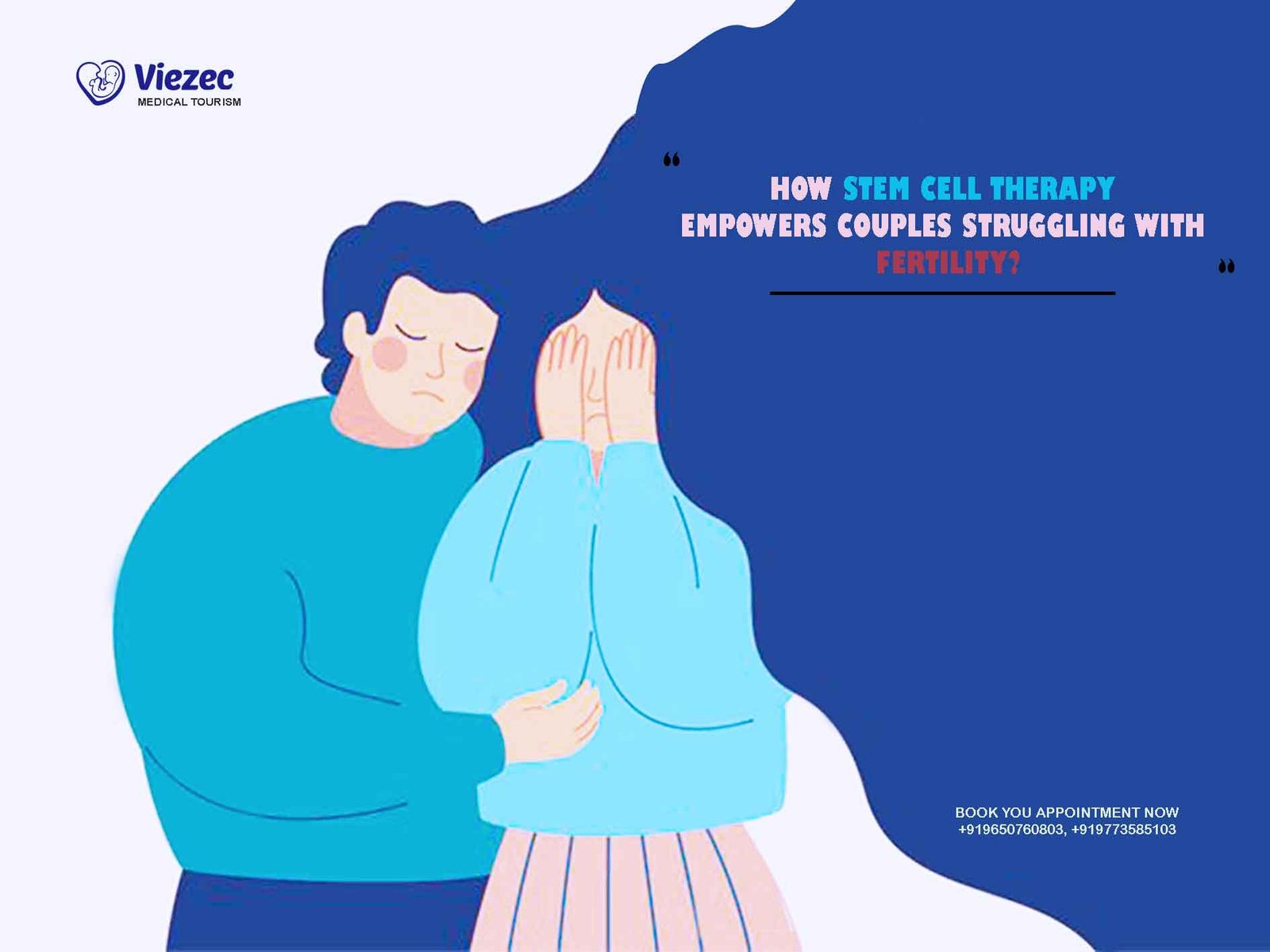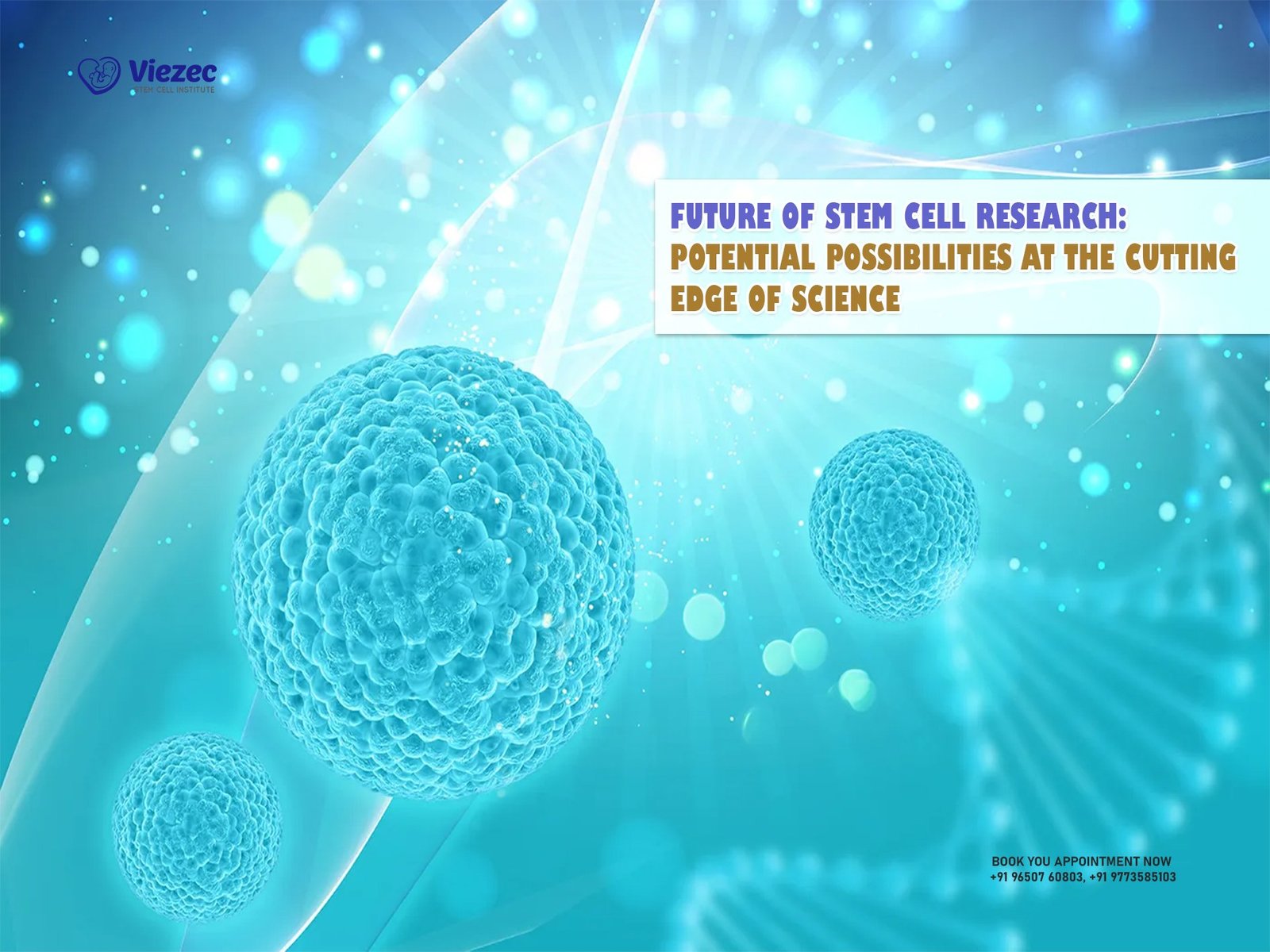In recent years, stem cell therapy has emerged as a promising avenue for addressing various medical conditions, including infertility. For couples facing challenges in conceiving, stem cell therapy offers new hope and possibilities. This revolutionary approach harnesses the regenerative potential of stem cells to enhance fertility outcomes and overcome barriers that traditional treatments may not effectively address. In this comprehensive guide, we delve into the mechanisms behind stem cell therapy for fertility and explore how it empowers couples striving to build their families.
Understanding Infertility
Before delving into the intricacies of stem cell therapy, it’s essential to grasp the complexity of infertility. Infertility is a widespread issue affecting millions of couples worldwide, with various factors contributing to its prevalence. Both male and female factors can contribute to infertility, ranging from hormonal imbalances and genetic factors to lifestyle choices and environmental influences.
Male Infertility Factors
- Sperm Quality: Issues such as low sperm count, poor sperm motility, and abnormal sperm morphology can significantly impact male fertility.
- Genetic Factors: Certain genetic conditions can affect sperm production or function, leading to infertility.
- Lifestyle Factors: Habits like smoking, excessive alcohol consumption, drug use, and exposure to toxins can impair sperm production and quality.
- Medical Conditions: Conditions like varicocele, infections, hormonal imbalances, and erectile dysfunction can interfere with fertility.
Female Infertility Factors
- Ovulation Disorders: Irregular or absent ovulation can hinder conception.
- Age: Advanced maternal age can decrease the quantity and quality of eggs.
- Anatomical Issues: Structural problems in the reproductive organs, such as blocked fallopian tubes or uterine abnormalities, can impede fertility.
- Hormonal Imbalances: Fluctuations in hormone levels can disrupt the menstrual cycle and ovulation.
- Endometriosis: This condition, characterized by the growth of uterine tissue outside the uterus, can cause infertility by affecting the function of the reproductive organs.
Role of Stem Cells in Fertility
Stem cells are undifferentiated cells with the remarkable ability to develop into various cell types within the body. They serve as the building blocks for tissues, organs, and systems, playing a crucial role in regeneration and repair processes. Stem cells can be classified into different types based on their origin and potency, including embryonic stem cells, adult stem cells, and induced pluripotent stem cells.
Types of Stem Cells Relevant to Fertility
- Embryonic Stem Cells: Derived from embryos, these pluripotent cells have the potential to differentiate into any cell type in the body, making them valuable for research and therapeutic purposes.
- Adult Stem Cells: Found in various tissues and organs throughout the body, adult stem cells contribute to tissue renewal and repair. They are more limited in their differentiation potential compared to embryonic stem cells.
- Mesenchymal Stem Cells (MSCs): A type of adult stem cell commonly found in bone marrow, adipose tissue, and other connective tissues, MSCs possess regenerative properties and can differentiate into cells such as osteoblasts, adipocytes, and chondrocytes.
Mechanisms of Stem Cell Therapy in Fertility
Stem cell therapy for fertility involves harnessing the regenerative capabilities of stem cells to address underlying factors contributing to infertility. Several mechanisms underlie the therapeutic effects of stem cell-based approaches in enhancing fertility outcomes:
- Regeneration of Reproductive Tissues: Stem cells have the potential to differentiate into various cell types found in the reproductive organs, including sperm cells, oocytes (egg cells), and cells lining the uterus (endometrial cells). By promoting tissue regeneration, stem cell therapy can restore the structural and functional integrity of the reproductive system.
- Modulation of the Microenvironment: Stem cells secrete bioactive factors that exert paracrine effects on surrounding cells and tissues. These factors regulate inflammation, promote angiogenesis (formation of new blood vessels), and enhance tissue repair processes. In the context of fertility, stem cell-derived factors can optimize the microenvironment within the reproductive organs, fostering conditions conducive to conception and embryo implantation.
- Immunomodulatory Effects: Dysregulated immune responses can contribute to infertility by affecting embryo implantation and pregnancy maintenance. Stem cells possess immunomodulatory properties, modulating immune cell activity and promoting immune tolerance. This immunomodulatory capacity is particularly relevant in conditions such as recurrent miscarriage and implantation failure, where immune dysfunction may play a role.
- Stimulation of Endogenous Regeneration: In addition to their direct regenerative effects, stem cells can stimulate endogenous repair mechanisms within the body. By releasing signaling molecules and growth factors, stem cells activate dormant stem cell populations and enhance tissue regeneration processes. This indirect mode of action amplifies the therapeutic impact of stem cell therapy in treating infertility.
Plan Your Stem Cell Therapy Procedure in India
Applications of Stem Cell Therapy in Fertility
Stem cell therapy holds promise for addressing a wide range of fertility-related issues in both men and women. From enhancing sperm quality and ovarian function to improving uterine receptivity and embryo implantation, stem cell-based approaches offer multifaceted solutions to infertility challenges.
Male Infertility Treatment
- Spermatogenesis Enhancement: Stem cell therapy aims to boost sperm production and quality in men with low sperm counts or impaired sperm motility. By introducing stem cells capable of differentiating into sperm cells (spermatogonia), this approach rejuvenates the testicular microenvironment and promotes spermatogenesis.
- Treatment of Azoospermia: Azoospermia, characterized by the absence of sperm in the ejaculate, presents a significant obstacle to natural conception. Stem cell-based strategies, such as spermatogonial stem cell transplantation or testicular tissue grafting, offer potential solutions for men with non-obstructive azoospermia by replenishing sperm-producing cells within the testes.
Female Infertility Treatment
- Ovarian Rejuvenation: Aging and various medical treatments (such as chemotherapy or ovarian surgery) can deplete the ovarian reserve and diminish fertility. Ovarian rejuvenation therapies utilizing stem cells seek to revitalize ovarian function by replenishing the pool of oocyte-producing cells (oogonial stem cells) and promoting follicular development.
- Endometrial Regeneration: Adequate endometrial thickness and receptivity are crucial for successful embryo implantation and pregnancy establishment. Stem cell-based approaches, including endometrial stem cell transplantation or endometrial regeneration therapy, aim to enhance endometrial receptivity and improve pregnancy outcomes in women with thin endometrium or recurrent implantation failure.
Unisex Approaches
- Uterine Regeneration: Uterine factor infertility, resulting from conditions like Asherman’s syndrome or uterine scarring, can be challenging to treat using conventional methods. Stem cell therapy offers a novel approach to regenerate uterine tissue and restore normal uterine function, enabling women with uterine abnormalities to carry a pregnancy to term successfully.
- Fertility Preservation: For individuals facing medical treatments that may compromise fertility, such as chemotherapy or radiation therapy, fertility preservation options are critical. Stem cell-based strategies, such as ovarian tissue cryopreservation or ovarian cortex transplantation, provide avenues for preserving fertility by safeguarding ovarian function and follicular reserves.
Clinical Advances and Research Initiatives
The field of stem cell therapy for fertility is rapidly evolving, with ongoing research paving the way for innovative treatments and improved outcomes. Clinical trials and preclinical studies are exploring various stem cell-based approaches across different aspects of fertility management, from gamete production and maturation to embryo development and implantation.
Recent Breakthroughs
- Gamete Formation from Stem Cells: Researchers have made significant strides in generating functional sperm and egg cells from stem cells in vitro. These advances hold promise for individuals with compromised gamete production, offering alternative sources of reproductive cells for assisted reproductive technologies (ART) such as in vitro fertilization (IVF) and intracytoplasmic sperm injection (ICSI).
- 3D Bioprinting of Reproductive Tissues: 3D bioprinting technology enables the fabrication of complex tissue structures using bioinks composed of stem cells and biomaterials. Scientists are exploring the feasibility of bioprinting reproductive tissues such as ovaries, testes, and uterine scaffolds, with the goal of creating functional organs for transplantation and fertility restoration.
- Gene Editing for Genetic Disorders: CRISPR-Cas9 and other gene editing tools offer unprecedented precision in modifying the genome, opening avenues for correcting genetic mutations associated with infertility. By targeting specific genes implicated in fertility-related disorders, researchers aim to develop gene therapies that could prevent hereditary conditions and improve reproductive outcomes.
Ethical Considerations and Regulatory Framework
While stem cell therapy holds immense promise for addressing infertility, it also raises ethical and regulatory concerns that warrant careful consideration. Issues such as the source of stem cells, consent procedures, safety oversight, and equitable access to treatment pose challenges to the responsible development and implementation of stem cell-based fertility interventions.
Ethical Challenges
- Embryonic Stem Cell Research: The use of human embryonic stem cells raises ethical dilemmas related to the destruction of embryos and the sanctity of human life. Debates surrounding the ethical permissibility of embryonic stem cell research continue to shape policy decisions and funding priorities in the field of regenerative medicine.
- Germline Editing: Manipulating the germline genome (sperm, eggs, and embryos) using gene editing technologies like CRISPR-Cas9 raises ethical concerns regarding the potential for heritable genetic modifications and unintended consequences. The ethical implications of germline editing for fertility enhancement require careful deliberation and international consensus.
Regulatory Framework
- Regulation of Stem Cell Therapies: Government agencies and regulatory bodies play a crucial role in overseeing the development, testing, and commercialization of stem cell therapies. Robust regulatory frameworks are essential to ensure patient safety, efficacy, and ethical conduct throughout the clinical translation process.
- International Collaboration: Given the global nature of stem cell research and medical tourism, international collaboration and harmonization of regulations are necessary to address disparities in standards of care, promote transparency, and prevent regulatory arbitrage.
Contact us for free online appointment
Make an informed Decision
Stem cell therapy represents a transformative approach to addressing infertility and empowering couples to realize their dreams of parenthood. By leveraging the regenerative potential of stem cells, researchers and clinicians are pioneering innovative treatments that target the root causes of fertility problems and offer new avenues for conception. As the field continues to advance, it is essential to navigate ethical considerations thoughtfully, uphold regulatory standards, and ensure equitable access to emerging therapies. With ongoing scientific discoveries and collaborative efforts, stem cell therapy holds the promise of revolutionizing fertility care and reshaping the landscape of reproductive medicine for generations to come.
Related post:-
Revive Your Reproductive Health: Ovarian Rejuvenation with PRP
Role of Exosome Therapy in Restoring Male Fertility









